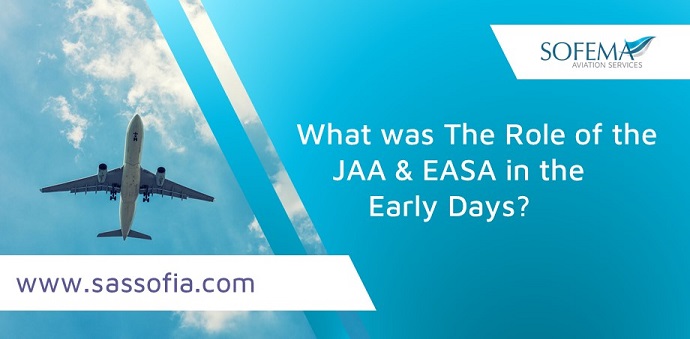Sofema Aviation Services (SAS) www.sassofia.com considers the transition from JAA to EASA as well as the role and responsibility of EASA.
Effective 28th September 2003 European Aviation Safety Agency (EASA) assumed aviation regulatory responsibility from the JAA for all European Member States.
The Joint Airworthiness Authority (JAA) continued to be responsible for third countries until ceasing operations on 30 June 2009.
The main difference between EASA and the now defunct JAA is that EASA is a Regulatory Authority that uses National Airworthiness Authorities (NAAs) to implement its Regulations whereas the JAA relied upon the participating NAAs to apply its harmonised codes without having any force of law at the source.
The JAA was not a regulatory body, regulation being achieved through the member authorities.
From its Inception, EASA assumed responsibility for the JAA regulatory environment which was then subject to continuous development including where necessary harmonised development with the Federal Aviation Administration, Transport Canada, and Agência Nacional de Aviação Civil (ANAC) Brazil.
Today EASA has taken all of the certification and standardisation functions previously undertaken by the JAA and in the interest of aviation standardization across the EU and has developed regulations for air operations, flight crew licensing, and non-EU aircraft used in the EU.
The Story of the Joint Airworthiness Authority (JAA)
The JAA was established in 1970. Originally its objectives were to produce common certification codes for large aeroplanes and for engines in order to meet the needs of European industry (e.g. Airbus). Partly driven by the need for a more efficient certification process particularly for the Airbus Aircraft. The JAA was founded with the objective of a cooperative safety regulatory system to achieve uniform high standards of aviation safety.
The decision to harmonize with the FAA regulatory environment was a good one and persists to this day.
After 1987 its work was extended to Flight Operations, Maintenance, Licensing, and Certification / Design standards for all classes of aircraft.
JAR-145 was issued on 30 July 1991 and became effective on 1 January 1992. JAR -145 introduced new requirements for maintenance organisations involved in the maintenance of aircraft operated for commercial air.
The initial issue of JAR-OPS 1 was on 1st March 1998 – with the goal to minimize Type Certification problems on joint ventures, to facilitate the export and import of aviation products, and to regulate commercial air transport operations.
EASA – The beginning
The adoption of the Regulation (EC) No 1592/2002 by the European Parliament and the Council of the European Union (EU) and the subsequent establishment of The European Aviation Safety Agency (EASA) created a Europe-wide regulatory authority that has absorbed most functions of the JAA (in the EASA Members states).
With the introduction of the EASA, some non-EU members of the JAA became non-voting members of the EASA, while others were completely excluded from the legislative and executive process. Among the functions transferred are safety and environmental type-certification of aircraft, engines, and parts and approval. Additional responsibilities have been subsequently added over time. In 2009, JAA was disbanded.
What does EASA Do?
In a few words, it is the job of EASA on behalf of the European Member States (and a few others) to interpret the ICAO SARP’s in a practical way which both shows compliance and at the same time delivers a set of workable regulations which Industry may use to deliver a compliant and safe product and service.
What are the formal responsibilities of EASA?
To analyze and research safety, authorizing foreign operators, giving advice for the drafting of EU legislation, implementing and monitoring safety rules (including inspections in the member states), giving type-certification of aircraft and components as well as the approval of organisations involved in the design, manufacture and maintenance of aeronautical products.
EASA Certifies New Aircraft
In fact, without approval from EASA, no aircraft is allowed to carry passengers within the European Union for profit (Commercial Air Transport). EASA has jurisdiction over new type certificates and other design-related airworthiness approvals for aircraft, engines, propellers, and parts.
EASA works with the National Aviation Authorities (NAAs) of the EU member states.
Next Steps
Follow this link to our Library to find & Download related documents for Free.
Please see www.sassofia.com & www.sofemaonline.com for EASA Regulatory Compliant & Vocational Training as Classroom, Webinar, or Online Courses. If you have any questions, comments, suggestions, or you need information about our services, email us at team@sassofia.com.
Tags:
EASA, EASA Functions, EASA History, EASA regulations, EASA Responsibilities, European Aviation Safety Agency (EASA), FAA, ICAO SARP, JAA, JAR-145, Joint Airworthiness Authority (JAA), National Airworthiness Authorities (NAAs), Regulation (EC) No 1592/2002, SAS blogs




